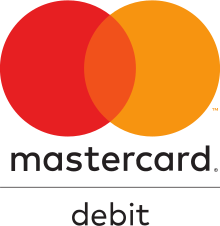Cannabis Made Clear
How to Spot Unregulated Cannabis Products
There may be more than just cannabis in that cute candy-coloured package you picked up online. Learn about the potential risks associated with unregulated products and how to identify them.
Last updated November 13, 2025 | Published on June 20, 2022

You may think all cannabis products are the same, but sadly they are not. While Canadians are purchasing cannabis from legal sources in growing numbers, unregulated products are still making their way into the hands of consumers — some of whom may not even realize they’re purchasing from an unregulated source.
Regulated by the Cannabis Act, legal cannabis is labelled and packaged to reduce the risk of accidental consumption and/or overconsumption. Unregulated cannabis products can be unlabelled or mislabelled, or have labels that lack key information, and they sometimes resemble non-cannabis products. That’s why it’s important to learn how to spot the differences between unregulated and regulated cannabis products.
The following are telltale signs that a cannabis product is from the illegal market.

Edible cannabis packaging resembles that of
non-infused candy
Unregulated edible cannabis products are sometimes sold in packaging that resembles that of popular candy brands. This is problematic because children may mistake the cannabis-infused edibles for non-infused candy — resulting in unintentional consumption that sometimes leads to trips to the emergency room. This is why regulated edibles must be sold in tamper-proof, child-resistant packaging with no resemblance to non-infused candy. Packaging must display health warnings and the standardized cannabis symbol.

There’s no (or little) detail about THC
and CBD amounts
If a product package doesn’t clearly display the THC and CBD amounts, it’s not regulated.
Labels for all legal cannabis products must display the amounts of THC and CBD per package (and in the case of products that are packaged in separate units, like a five-pack of soft chews, the amount per unit). This is to help mitigate the risk of overconsumption.
Unregulated products often lack details about THC and CBD content and dosage, which can lead consumers to consume more of these cannabinoids than desired. Unregulated product labels that do display THC and CBD amounts may be inaccurate, either because the producer is intentionally exaggerating the potency or because they haven’t tested the contents of each batch.
Learn more about reading the details on a cannabis label here.
The package contains more than the
equivalent of 30 g of dried cannabis
Another sign that a cannabis product is unregulated: It exceeds 30 g of dried cannabis (or the equivalent), the legal limit per product. So if your bag of dried flower contains more than 30 g, it’s not legal.
Similarly, edibles can contain a legal maximum of 10 mg of THC per immediate container and up to 30 g of dried cannabis equivalent per package, while extracts and topicals can have a maximum of 1,000 mg of THC per package. If your edible or topical product exceeds those limits, it’s from the illegal market.
Wondering how you can be sure the website or store you’re visiting is regulated before you see the packaging? Here’s how to identify legal sources of cannabis.

Key stamps and symbols are missing
With the exception of products that meet the definition of low-THC, legal cannabis products must have an excise stamp affixed to the label. The stamp is proof that the product was legally produced and has not been tampered with. The appearance of excise stamps varies among the provinces and territories, so ensure the stamp specifies “Ontario.” The most important characteristic to check? The middle portion of the stamp should glisten under light and display a unique number.
Legal products that contain THC in a concentration greater than 10 mcg (micrograms) per gram must also have the standardized cannabis symbol — a red octagon with the letters “THC” inside — on the label.
One more thing: Regulated cannabis products contain health warnings on the packaging. These warnings help ensure cannabis products are consumed responsibly and consumers are aware of any potential risks associated with their use. The red THC symbol and yellow health warnings can both be reproduced on illegal products, so if you are unsure, check that the excise stamp is correct.
There’s no list of ingredients
Regulated cannabis extracts, topicals and edibles must include an ingredients list on the label. This helps consumers know exactly what they’re getting when consuming legal cannabis products.
Rigorous quality-control testing also ensures you know what’s not in regulated products. Because illegal products aren’t regulated or tested, you don’t know what ingredients may be in them, even if they display an ingredients list. They could contain potential allergens, dangerous contaminants, banned pesticides, fungus or mould.
A quick note about edibles: All regulated cannabis edibles must also include a nutrition facts table. If your edibles package doesn’t have a nutrition facts table, it’s not from the legal market. Know that illegal cannabis producers may try to mimic these packaging elements, so you may find nutrition facts tables on unregulated products.
To further help you spot the differences between regulated and unregulated cannabis products, check out the visual guide below, or download a comprehensive version to keep handy.
Download Accessible PDF
Back to Cannabis Made Clear Back to Legal Use







